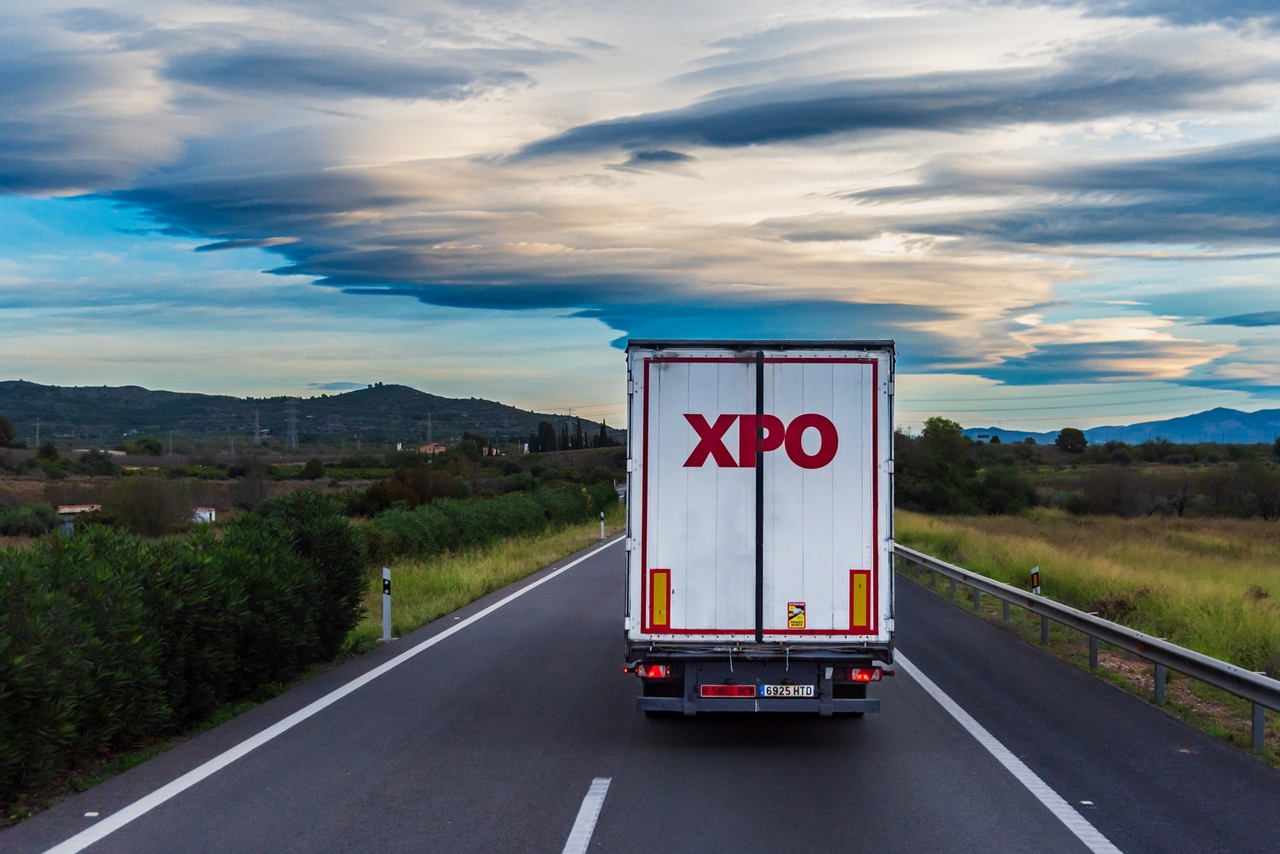Explore web search results related to this domain and discover relevant information.

Immediacy is the main concern. A limit order is executed at or below a purchase or sale price. Price is the key with limit orders.Market orders are the most basic. A broker receives a trade order and processes it at the current market price. But prices might change between the time the broker ...
A market order executes a transaction as quickly as possible at the present price. Immediacy is the main concern. A limit order is executed at or below a purchase or sale price. Price is the key with limit orders.Market orders are the most basic. A broker receives a trade order and processes it at the current market price.Sales orders need a minimum acceptable sales price. The risk with a limit order is the price may never fall within its guidelines, rendering it useless. Or there may not be enough liquidity in the stock to fill the order. Limit orders are more expensive than market orders.By clicking “Accept All Cookies”, you agree to the storing of cookies on your device to enhance site navigation, analyze site usage, and assist in our marketing efforts.

A limit order is your way of telling the market, "I'll buy or sell, but only at this specific price or better." It puts you in the driver's seat on price, but there's a catch—if the market never hits your number, your order just sits there, unfilled. A stop order, on the other hand, is all ...
A limit order is your way of telling the market, "I'll buy or sell, but only at this specific price or better." It puts you in the driver's seat on price, but there's a catch—if the market never hits your number, your order just sits there, unfilled. A stop order, on the other hand, is all about getting the trade done.Once the market touches your stop price, it flips into a market order, executing at whatever the current best price is. You get in or out, but the final price might not be exactly what you hoped for. Getting these two order types straight is one of the first major hurdles for any trader. Though they both seem to be about setting a future price, they serve completely different strategic goals. Think of a limit order as an offensive move—you're actively trying to get a good deal.A limit order is your tool for trading with precision. It gives you direct command over the exact price you’re willing to pay or accept. This isn't like a market order, which just executes at whatever the current price happens to be.With a limit order, you call the shots—your trade only goes through at your price, or a better one. This level of control is a game-changer for both entering and exiting the market. It lets you build a trading plan around specific price targets, taking the emotion and guesswork out of the equation when things get volatile.
Live cattle futures are showing $5.35 to $6.27 losses across most contracts on Tuesday. Cash activity has yet to show much beyond compiling showlists this week. Last week saw sales of $242-243, steady to $1 higher in the South and $2-3 weaker in the North. Feeder cattle futures are falling...
Open the menu and switch the Market flag for targeted data from your country of choice.Commodities Grains Energies Alerts Pre-Market Post-Market


Market orders and limit orders tell your broker exactly how to execute your trade and can save you money while increasing your return.
Investors will place a market order when they want to execute a trade at the best available price the moment an order is sent. A limit order executes the trade at a specific price that the investor sets, and only once that price is met does the trade execute.These two order types tell your broker exactly how to execute your trade — market orders are meant to execute as quickly as possible at the current market price, while limit orders are meant to specify a price at which an investor is willing to buy or sell.A market order instructs your broker to execute your trade of a security at the best available price at the moment you send in your order. If you’re buying, you’ll transact at the seller’s asking price. If you’re selling, you’ll transact at the buyer’s bidding price. The bid and the ask could differ substantially at times, and you have no control over pricing here. A limit order instructs your broker to execute your trade only at the price you specify or better.As a practical matter, traders may place limit orders at the currently quoted price just to ensure that their trade doesn’t move the stock price. If the trade doesn’t execute immediately, they may adjust the price up or down to get it to execute more (or less) quickly. While the net effect may be the same as a market order, it ensures the trader doesn’t execute at a wild price.

In the fast & volatile stock market, limit orders let traders control their buy or sell price. Learn about the pros & cons of limit orders & how they differ from market orders.
When you set a buy limit order, for example, the trade will only be executed at that price or lower. For sell limit orders, the order will be executed at the price you set or higher. By using certain types of orders, traders can potentially reduce their risk of losses and avoid unpredictable swings in the market.A stop-limit order is a combination of a stop order and a limit order. Stop-limit orders involve setting two prices. For example: A stock is currently priced at $30 and a trader believes it’s going to go up in value, so they set a buy stop order of $33. When the stock hits $33, a market order to buy will be triggered.There are several reasons why a trader or investor might want to use a limit order. • Price protection. When a stock is experiencing volatility, you may not want to risk placing a market order and getting a bad price.Limit orders can also be useful when the stock being traded doesn’t have a lot of liquidity. If there aren’t many people trading the stock, one order could affect the price. When entering a market order, that trade could cause the price to go up or down significantly, and a trader could end up with a different price than intended.
Celebrate Super Brand Day on TikTok Shop! Discover the biggest brands and their best deals of the year—exclusively on TikTok Shop · Beachwaver’s Super Brand Day is here from May 20–26, and you don't want to miss it! From their viral curling irons to dreamy body butters and fragrances, ...

Investors use buy limit orders to avoid paying more than a certain price for a security. Buy limits can be especially advantageous during times of market volatility, where stock prices are more likely to trade over a large price range.
Limit orders differ from market orders because a market order to purchase a security is guaranteed to be executed at whatever the best available price is. A buy limit order is only executed if the security price falls to or below the limit price specified in the order.Market orders will succeed in buying or selling a security as quickly as possible, without regard to the price. When investors enter a buy limit order with their brokerage, it is only executed if the order can be transacted at a price at or below the limit price specified in the order.Since execution is not guaranteed for limit orders, investors must specify for how long they're willing the limit order to remain active. A day order will expire at the next market close if it is not executed.When placing the buy order investors must select between a market order or a limit order, and if they opt for a limit order they must specify a limit price.
Finance expert Suze Orman recently explained this choice on her "Women & Money" podcast after a listener, Sharon, asked about using limit orders in today's volatile market. Sharon, who is 83, said she doesn't want to spend her days glued to stock charts but wants to understand the best way ...
When you buy or sell a stock, you don't just decide how many shares you want — you also have to decide how you want your order carried out. Finance expert Suze Orman recently explained this choice on her "Women & Money" podcast after a listener, Sharon, asked about using limit orders in today's volatile market.Sharon, who is 83, said she doesn't want to spend her days glued to stock charts but wants to understand the best way to buy or sell shares. Orman broke down the difference between the two main order types — market orders and limit orders — and when each may make sense.As Orman explained, if you want to buy 100 shares of a company right now, a market order will fill that request instantly. You may not know the exact price until the order goes through, but you can be confident the trade will happen quickly. This type of order is often used when the most important thing is getting into — or out of — a position right away. A limit order gives you more control over the price you're willing to pay — or accept — when buying or selling.This approach can be helpful if, like Sharon, you don't want to watch the market constantly. However, it comes with a tradeoff: the order might never execute if the stock doesn't reach your set price. Limit orders can protect you from paying too much in a fast-moving market or from selling at a price you're not comfortable with.


A stop market order automatically becomes a market order when a certain price is reached. A stop limit order executes at the specified stop price or better. Learn their unique feat
Low liquidity markets may create situations in which slippage occurs – highly volatile markets and low liquidity can cause orders submitted via stop markets to execute at the next-best market price automatically should liquidity at the stop price be insufficient to match the order at the time of execution. Remember that crypto prices can move very fast – stop market orders may result in slight deviations in order execution price from a trader's stop price. A stop limit order is a conditional order type that combines both stop orders and limit orders.A limit order is placed by a trader to buy or sell an asset at a specific price or better. Unlike market orders, which execute an order at the best possible market price but don't guarantee a specific price, a limit order won't execute unless an asset reaches or exceeds a specific price, referred to as the limit price.Stop limit orders can be helpful for traders active in highly volatile or low liquidity markets in which prices of assets can move quickly between entry or exit price, potentially resulting in unfavorable order fills.However, if the asset fails to reach the limit price, the order will remain open and unfilled until the conditions set by the trader are met. The most significant difference between a stop market order and a stop limit order is the manner in which the order is executed once an asset reaches the stop price.
A market order generally will execute ... not necessarily the price at which a market order will be executed. A limit order is an order to buy or sell a security at a specific price or better....
A market order generally will execute at or near the current bid (for a sell order) or ask (for a buy order) price. However, it is important for investors to remember that the last-traded price is not necessarily the price at which a market order will be executed. A limit order is an order to buy or sell a security at a specific price or better.The investor could submit a limit order for this amount and this order will only execute if the price of ABC stock is $10 or lower. A stop order, also referred to as a stop-loss order is an order to buy or sell a stock once the price of the stock reaches the specified price, known as the stop price. When the stop price is reached, a stop order becomes a market order.A buy stop order is entered at a stop price above the current market price. Investors generally use a buy stop order to limit a loss or protect a profit on a stock that they have sold short. A sell stop order is entered at a stop price below the current market price.
Indian benchmark indices ended flat on September 5 amid volatility, leaving traders cautious about next week’s outlook. Sudeep Shah, Vice-President & Head of Technical and Derivatives Research at SBI Securities, decodes Nifty, Bank Nifty, FII trends, and sector
Stock Market Next Week: Will Banking Weakness Limit Market Upside? Updated 7 September 2025 at 08:45 IST · Republic Business · 4 min read · Reported by: Gunjan Rajput · Follow : ➦ Share · Stock Market | Image: Shutter stock · Summary is AI-generated, newsroom-reviewed ·On the weekly chart, it formed a bullish candle with a long upper shadow, reflecting selling pressure at higher levels even amid the rebound,” said Sudeep Shah, Vice-President & Head of Technical and Derivatives Research, SBI Securities. Market Structure and Key Levels for Next Week According to Shah, the index is trading above its 100-day and 200-day EMAs, indicating a positive long-term trend.In conclusion, the stock market next week is expected to remain range-bound unless Nifty decisively breaches either its 24,950 resistance or 24,500 support. Bank Nifty’s underperformance remains a concern, while metals and autos could continue leading the charge.FII Positioning: Outflows Keep Sentiment Weak Foreign Institutional Investors (FIIs) have withdrawn nearly ₹94,600 crore from the cash market in the past two months.

If you’re selling, you’ll transact at the buyer’s bidding price. The bid and the ask could differ substantially at times, and you have no control over pricing here. A limit order instructs your broker to execute your trade only at the price you specify or better.
Investors will place a market order when they want to execute a trade at the best available price the moment an order is sent. A limit order executes the trade at a specific price that the investor sets, and only once that price is met does the trade execute.These two order types tell your broker exactly how to execute your trade — market orders are meant to execute as quickly as possible at the current market price, while limit orders are meant to specify a price at which an investor is willing to buy or sell.A market order instructs your broker to execute your trade of a security at the best available price at the moment you send in your order. If you’re buying, you’ll transact at the seller’s asking price. If you’re selling, you’ll transact at the buyer’s bidding price. The bid and the ask could differ substantially at times, and you have no control over pricing here. A limit order instructs your broker to execute your trade only at the price you specify or better.As a practical matter, traders may place limit orders at the currently quoted price just to ensure that their trade doesn’t move the stock price. If the trade doesn’t execute immediately, they may adjust the price up or down to get it to execute more (or less) quickly. While the net effect may be the same as a market order, it ensures the trader doesn’t execute at a wild price.

Learn the crucial differences between market and limit orders, when to use each type, execution strategies, and how to minimize slippage costs in stock trading.
Here's something every trader learns the hard way: the order type you choose can be the difference between a profitable trade and an expensive lesson. Market and limit orders aren't just technical jargon—they're the fundamental tools that determine whether you get the price you want or the price the market decides to give you.You hit "buy" with a market order for 100 shares. Here's what happens in those next few milliseconds: ... On 100 shares, that's $1.50 in immediate slippage. Not much? Wait until you're trading 1,000 shares of a volatile stock... ... Now, limit orders are the patient trader's best friend.Bad news breaks. Your stock is tanking. Every second counts. This is when market orders earn their keep—getting you out before things get worse. I've seen traders lose thousands trying to "save" $20 with a limit order during a crash.Pre-market/After-hours: Liquidity drops 90%+. Your market order is a donation to market makers. During halts or reopenings: The first prints after a halt can be wild. Always use limits here.

Finance expert Suze Orman recently explained this choice on her "Women & Money" podcast after a listener, Sharon, asked about using limit orders in today's volatile market. Sharon, who is 83, said she doesn't want to spend her days glued to stock charts but wants to understand the best way ...
When you buy or sell a stock, you don't just decide how many shares you want — you also have to decide how you want your order carried out. Finance expert Suze Orman recently explained this choice on her "Women & Money" podcast after a listener, Sharon, asked about using limit orders in today's volatile market.Sharon, who is 83, said she doesn't want to spend her days glued to stock charts but wants to understand the best way to buy or sell shares. Orman broke down the difference between the two main order types — market orders and limit orders — and when each may make sense.As Orman explained, if you want to buy 100 shares of a company right now, a market order will fill that request instantly. You may not know the exact price until the order goes through, but you can be confident the trade will happen quickly. This type of order is often used when the most important thing is getting into — or out of — a position right away. A limit order gives you more control over the price you're willing to pay — or accept — when buying or selling.This approach can be helpful if, like Sharon, you don't want to watch the market constantly. However, it comes with a tradeoff: the order might never execute if the stock doesn't reach your set price. Limit orders can protect you from paying too much in a fast-moving market or from selling at a price you're not comfortable with.

Learn about the key stock market order types – market, limit and stop – and when to effectively use each to enhance clarity and control in your trading strategy.
Sharon, who is 83, said she doesn't want to spend her days glued to stock charts but wants to understand the best way to buy or sell shares. Orman broke down the difference between the two main order types — market orders and limit orders — and when each may make sense.
As Orman explained, if you want to buy 100 shares of a company right now, a market order will fill that request instantly. You may not know the exact price until the order goes through, but you can be confident the trade will happen quickly. This type of order is often used when the most important thing is getting into — or out of — a position right away. A limit order gives you more control over the price you're willing to pay — or accept — when buying or selling.This approach can be helpful if, like Sharon, you don't want to watch the market constantly. However, it comes with a tradeoff: the order might never execute if the stock doesn't reach your set price. Limit orders can protect you from paying too much in a fast-moving market or from selling at a price you're not comfortable with.KT, Orman's podcast co-host, shared a story about her brother, who once placed a limit order for a client before leaving on vacation. When the market crashed unexpectedly, the limit order saved the client from a major loss and turned him into "a hero overnight."If price control is more important, a limit order can help — but patience is required, and there's no guarantee the trade will go through. As Orman explained, both tools have their place. The key is knowing how each works so you can decide what fits your strategy, risk tolerance, and comfort level with monitoring the market.


Una orden Stop Loss limita las pérdidas, Take Profit permite asegurar beneficios cuando el precio alcanza un nivel determinado. Una orden Sell Market se utiliza para vender inmediatamente al precio actual.
Examinemos esto. Un trader quiere comprar acciones de Apple a 115 dólares por acción. Sin embargo, el activo está ahora a $120,70. La pregunta es: ¿qué órdenes debe colocar un trader? ¿Orden de límite, orden de mercado, Take profit, Stop limit? ¿O bastará con la más sencilla Buy market?Buy Market y Sell Market, Stop loss y Stop limit, así como las demás órdenes descritas, se basan en una idea sencilla.Todo lo que necesitas saber sobre las órdenes en un solo artículo. ¿Cuándo se debe utilizar una orden de Límite o de Stop? ¿Qué pasa con las órdenes Stop-Limit? Siga leyendo para conocer las mejores prácticas y ejemplos.Como trader practicante, siempre combino Buy Stop y Sell Stop con patrones Price Action, como el Doble Fondo o la Cabeza y los Hombros para detectar rupturas de niveles y uso Limit Order para definir retrocesos de tendencia, donde Stop loss y Take Profit ayudan a asegurar ganancias.
With a limit order, you're essentially saying, "I'm willing to pay up to $X for this stock" (buy limit) or "I'm willing to sell this stock for at least $Y" (sell limit). ... You set a maximum price you're willing to pay for a stock (e.g., $50). If the stock's market price falls to $50 or below, ...
Invest carefully during volatile markets. Traders may not be able to quickly match buyers and sellers to execute your order. Limit, stop, and stop-limit orders can process with either your broker's default cost basis method or your preferred cost basis method, if applicable.When trading, you're typically buying or selling at the current market price—and those prices can fluctuate rapidly. To manage volatility risk, traders can use specific order types that give more control over the price you're willing to pay or sell for. For example, a limit order lets you set a maximum price to buy a security or a minimum price to sell a security.With a limit order, you're essentially saying, "I'm willing to pay up to $X for this stock" (buy limit) or "I'm willing to sell this stock for at least $Y" (sell limit). ... You set a maximum price you're willing to pay for a stock (e.g., $50). If the stock's market price falls to $50 or below, your order is executed at $50 or less.If the stock's market price stays below $60, your order won't be executed. Limit orders ensure you get the price you want, but they don't guarantee execution.

Given the current valuation and market conditions, XPO stock is already fairly valued. Here's why investors should stay on the sidelines, given the risks.
XPO stands out in the LTL freight market with disciplined capacity management and a strong customer mix, focusing on yield and cost control.Given the current valuation and market conditions, I do not see a highly compelling investment case for XPO at this time.Looking for a helping hand in the market? Members of The Aerospace Forum get exclusive ideas and guidance to navigate any climate.XPO (NYSE:XPO), one of the largest providers of less-than-truckload (LTL) freight transportation in North America, stands out in a highly competitive market with improving unit revenues and putting the focus on disciplined capacity expansion and pricing to drive

A buy limit order is a stock market order where investors set a maximum price for buying a security. This method lets investors control their purchase price and avoid paying too much in volatile markets. Unlike market orders that execute at the current best price, buy limit orders only fill ...
A buy limit order is a stock market order where investors set a maximum price for buying a security. This method lets investors control their purchase price and avoid paying too much in volatile markets. Unlike market orders that execute at the current best price, buy limit orders only fill if the stock’s price reaches […] The post How to Use Buy Limit Orders When Investing appeared first on SmartReads by SmartAsset.A buy limit order is a stock market order where investors set a maximum price for buying a security. This method lets investors control their purchase price and avoid paying too much in volatile markets. Unlike market orders that execute at the current best price, buy limit orders only fill if the stock’s price reaches or falls below the specified limit, promoting disciplined investing.Buy limit orders allow investors to strategically build their portfolios by setting precise purchase prices, which helps avoid buying at temporarily high prices. A market order is an instruction to buy or sell a security immediately at the best available price.For example, if a stock is trading at $50 per share and an investor places a market order, the trade will execute immediately at the current market price, even if slight fluctuations occur during the transaction. In contrast, a buy limit order focuses on price control by specifying the maximum price an investor is willing to pay.







